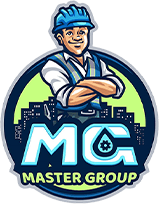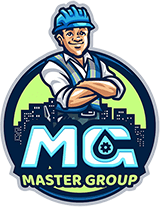Air conditioning (AC) isn't just a luxury in modern homes; it's a necessity, especially when the summer heat hits its peak. But how much do we really know about the inner workings of these cooling saviors? Understanding how AC systems function can not only help you appreciate the comfort they provide, but also save you from potential headaches through DIY troubleshooting and proper maintenance practices.
In this extensive guide, we will take you on a detailed tour inside your AC unit, breaking down the mechanics, explaining the cooling process, sharing energy efficiency tips, and offering guidance on common issues and maintenance tasks. Whether you're a first-time homeowner or an experienced DIY enthusiast craving a deeper understanding of HVAC technologies, this post is designed to keep your cool knowledgeably.
Understanding the Basics
AC Anatomy 101: What’s Inside Your Cooling System?
Your air conditioning system does more than just blow cold air; it's a sophisticated network of components working in harmony to regulate temperature. The main parts include the evaporator coil, condenser coil, compressor, and the air handler, all connected via a system of pipes and ducts.
Evaporator Coil – Where Cool Air Is Born
This critical component absorbs heat from the air in your home and is typically located in the indoor unit. As the liquid refrigerant within the coil evaporates, it transforms into a gas, drawing in heat and leaving cooler air to be circulated back into your living space.
Compressor – The ‘Heart’ of the AC System
Think of the compressor as the engine – it pumps the refrigerant through the system, maintaining the correct pressure and temperature for the cooling process. Without it, there'd be no circulation, and no cooling effect.
Condenser Coil – Releasing Heat Outdoors
Located in the outdoor unit, the condenser coil helps dissipate the heat removed from your home into the outside air. Here, the refrigerant condenses back into a liquid state, ready to repeat the cooling process indoors.
Air Handler – The System Director
This part of the AC system combines the blower and the evaporator, pushing the conditioned air through your ducts and into your home.
The Cooling Process: A ‘Cool’ Physics Lesson
How Refrigerant Rules the Roost for AC Cooling
The magic of air conditioning largely rests on the unique physical properties of refrigerant – typically a substance like R-410A or R-22 (though the latter is being phased out for newer systems). This chemical mixture is the carrier of heat, taking it from where it's not wanted and transferring it where it can be safely released.
Step by Step: How the AC Makes Your Home Cool
- Warm air from your home is drawn in through the return vents and flows over the evaporator coil.
- The refrigerant within the coil absorbs the heat from this air, turning into a gas.
- The compressor then pressurizes the refrigerant gas, increasing its temperature and making it ready for the next stage.
- The now-hot gas moves to the condenser coil in the outdoor unit, releasing the heat as it condenses back into a liquid.
- Once back in liquid form, the refrigerant restarts the cycle when it returns to the evaporator to absorb more heat.
Energy Efficiency Tips: Mastering the AC Dial
Setting, Forgetting, and Saving: The Right Temperatures
It's a common question: What's the ideal temperature setting for my AC, especially with savings in mind? The general rule of thumb is to aim for a setpoint of around 78 degrees during the warmer months, adjusting up or down as needed for comfort.
Programmable Thermostats: Your Ally for Savings
Investing in a programmable thermostat is a smart move. It allows you to set different temperatures for various times of the day, meaning your AC runs more efficiently when you're home and adjusts to conserve energy when you're away.
Keep It Constant: The Importance of Smooth Operation
Rapid cycling of your AC due to frequent on-off is not only inefficient but can also lead to premature wear on your system. Aim for a more steady on-off cycle to maintain efficiency.
Common Issues and Troubleshooting: When Your AC Runs Hot and Cold
Airflow Obstacles: The Silent Killers of Cool Air
Poor airflow can be caused by blockages in your vents or within the unit itself. Clean those dusty filters regularly, ensure nothing is obstructing your vents, and consider if blocked or leaky ducts might be the issue.
Leaking Refrigerant – The Silent Treatment
A reduction in refrigerant levels can signal a leak, diminishing your AC’s cooling capacity and potentially releasing environmentally harmful gases. Look for ice buildup on the coils or decreased cooling efficiency as indicators.
Thermostat Drama: The Temperature Wars
A faulty thermostat can mean your AC doesn’t know when to kick in or shut off. Check for battery issues, ensure it’s properly calibrated, and if all else fails, it might be time for a replacement.
DIY Maintenance Tips: Keeping Your AC Cool, Clean, and Trouble-Free
Filters – The Unsung Heroes of Clean Air
Dirty filters not only affect your indoor air quality but also put a strain on your AC unit. Check them at least every 90 days, but more frequently if you have pets or allergies. A clogged filter can reduce airflow and cause a number of inefficiencies in the system.
Keeping an Eye Out for Leaks
Refrigerant isn't used up; it recirculates. If you find yourself needing to "top it off" frequently, odds are you have a leak. Look for oil stains near your unit, which could indicate a refrigerant leak, and call a professional to address the issue.
Routine Professional Maintenance: An Ounce of Prevention
Professional AC maintenance, typically performed yearly, can catch small issues before they turn into big headaches, increasing the lifespan of your unit and keeping it in peak operating condition.
Conclusion
Air conditioning is integral to our modern-day comfort, but it's also a major player in our home's energy consumption. By understanding the fundamentals of how your AC system operates, you hold the key to efficient operation, cost savings, and a longer lifespan for the unit. Simple DIY maintenance tasks and vigilant troubleshooting can ensure those hot summer days stay perfectly chill.
Caring for your AC is caring for your home's comfort, and in the grand scheme of things, an investment in maintenance can be much cooler than a surprise on your energy bill. Ready to be an AC aficionado? Take these steps to heart and enjoy the well-deserved AC wizardry you’ve now become a part of.


.2402221443550.jpg)
